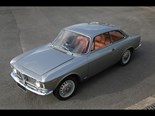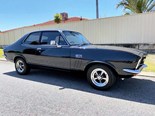Ford XY Fairmont (1970-72) Buyers Guide
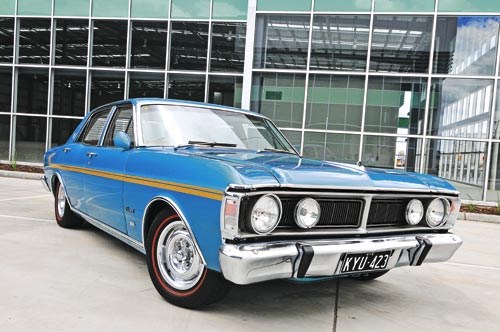 Ford XY Fairmont (1970-72) Buyer's Guide
Ford XY Fairmont (1970-72) Buyer's Guide

 Ford XY Fairmont (1970-72) Buyer's Guide
Ford XY Fairmont (1970-72) Buyer's Guide

 Ford XY Fairmont (1970-72) Buyer's Guide
Ford XY Fairmont (1970-72) Buyer's Guide
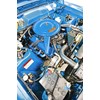
 Ford XY Fairmont (1970-72) Buyer's Guide
Ford XY Fairmont (1970-72) Buyer's Guide
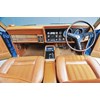

|
|
Ford XY Fairmont (1970-72) Buyer's Guide
|

|
|
Ford XY Fairmont (1970-72) Buyer's Guide
|

|
|
Ford XY Fairmont (1970-72) Buyer's Guide
|

|
|
Ford XY Fairmont (1970-72) Buyer's Guide
|
Ford XY Fairmont 1970-72. If you’re not too fussed about badge envy these big Fords make economical sense.

|
|
Ford XY Fairmont (1970-72) Buyer's Guide
|
Ford XY Fairmont (1970-72)
Winning a George Clooney lookalike contest would doubtless improve social standing for us humans and so it is in the world of quasi-muscular Australian cars. As values for XY Falcon GTs and the Phase 3 GTHO soared to unprecedented highs, other members of the XY Ford family were carried on a rapid rise as well.
The XY was far more than a revamp of the XW model that appeared in 1969. Externally the changes were limited to a new grille and front indicators, modified tail-lamps and body embellishments but mechanically the XY was intended to keep the brand ahead of Holden's forthcoming HQ.
Ford Australia's marketing was also in full-aggressive mode and its dealers had become highly-adept manipulators of the factory options sheet.
Where GT versions might have appeared a little crass and overt to some buyers - especially those choosing a Fairmont for business use - ticking boxes on the order form could produce a car that was close to unique and with equivalent performance to a GT. Importantly, it would also fool the insurance companies whose paranoia - perhaps they had seen too many Bathurst 500 crash replays - was reflected in premiums for XY GTs that were sometimes 300 percent higher than for a Fairmont with the same 5.8-litre engine.
Not all XY Fairmonts were V8s and they really didn't need to be. In conjunction with the XY model's November 1970 introduction, Ford announced a six-cylinder engine that would power Falcons, Fairlanes and Cortinas for the better part of two decades. With hindsight after the 3.9-litre EA debacle, it might have wished for a few more years with the ultra-durable 4.1-litre.
This engine - later modified to feature a cross-flow cylinder head - delivered a solid 116kW in standard form, increasing to 127kW for the '2V' version with its twin-throat carburettor. Even the top-spec 4V, 351 cubic inch engine was available to Fairmont buyers, who could mate it with a three-speed automatic transmission or 'top-loader' four-speed.
Front disc brakes were mandatory when a V8 was specified, with the very useful limited-slip differential adding just $42 to the purchase cost.
Buyers who wanted to really hop aboard the quasi-muscle band-bus could spend an extra $61 on dual exhausts and $145 for the GS dress-up pack which added a centre console, GT-type steering wheel with 'rim-blow' horn, full chromed wheel covers in the style of the original XR GT and extra instruments.
The Fairmont interior received a complete makeover, beginning with seats that were better sprung and more thickly padded than in XW and earlier Fairmonts. The standard seat was a split bench with pull-down armrest with individual buckets and a centre console optional. The door trims and dashboard incorporated 'teak grained' plasti-wood and courtesy lights operated when any door was opened.
Noise reduction was a big Fairmont selling point and the well-insulated luxury model was definitely quieter for occupants than the standard 500.
Fairmont wagons with the basic 4.1-litre engine and automatic transmission cost $3707 - just $234 more expensive than a sedan - and included an electric tailgate window.
ON THE ROAD
The major difference between the XA and XY Fords is the earlier cars' feeling of interior space. Although the XY cabin is narrower by 50mm, the XY's big windows and simple dash provide plenty of all-round vision and a less confined feel, especially for rear seat occupants.
The handbrake hides under the dash and isn't accessible unless the car has been fitted with later inertia-reel seat belts. Everything else, though, is easy to find and simple to operate. The low-backed front seats might prove a little strange to those used to modern items with head restraints but they are broad, comfortable and perfect for long-distance trips.
The boot is broad as well but too shallow for tall items. Those who need space for family holidays can opt for the abundantly-spacious wagon.
Falcon steering - prior to the early-'90s anyway - has always scared the bejillywillywhippers out of me. Fairmonts often come with power assist, so you only need to twirl the wheel a turn and a bit to get the bugger pointed in the right direction, but have next to no road feel. Manual-steer cars have a whopping 5.4 turns which makes for acceptable effort at parking speeds but virtually no chance of catching a slide before it becomes a spin.
Fitting wheels such as the Globe alloys that were XY options and ensuring that all the rubber bushings and moving parts are in tip-top order is essential, says XY expert Neil Thompson.
"The bigger wheels give you a much greater choice in tyres and good rubber will dramatically affect the amount of wheel input you need," he said "All of the suspension components and bushes are available and not expensive and will really transform the way the car handles."
Either of the V8s mates well with the XY's style and character. They are lazy and very durable engines that are happy just to lope along in the 2000-3000rpm rev range, but run to around 5000 revs if asked to push 1520kg of Fairmont past a couple of road trains or haul a boat up Mt Victoria.
Cars with the base-level 4.1-litre engine and auto transmission recorded around 19 seconds for 0-400 metres, while 5.8-litre autos were three seconds faster.
The fuel tank holds 64 litres which will take a carefully driven V8 around 400km. The 2V six-cylinder engine was 20 percent more frugal.
HOW MUCH?
At a time when prices are performing more gyrations than a Crusty Demon biker, that is literally a $64,000 question.
A year or so ago in a market that was 10 metres tall and bombproof, vendors of rare specification V8 Fairmonts were asking and realising prices above $50,000. These weren't even the GT replica modified cars which in some instances reached six figures; just verified 351 sedans in scarce colours and with desirable options.
Although XY Fairmonts are following the downward trend being led by GT versions, the fall isn't likely to be as savage or prolonged.
A genuine K-code 351 with L-code four-speed trans (these numbers appear on the car's ID plate) and that hasn't been turned into a fake GT should still be worth up to $40,000, with automatic 351-engined cars $5000-8000 less.
Six-cylinder and V8 cars in decent but flawed condition will be available at less than $10,000; these in exceptional original condition exceeding $15,000.
CHECKLIST
Body & Chassis
"These cars rust from the inside out, so don't trust a shiny paint-job or claims that the car is 'fully restored'," warns model expert Neil Thompson. Obvious areas for corrosion are wheel-arch lips and door skins, windscreen surrounds, station wagon tailgates and rear quarter panels. If these areas look sound, arrange access to a trolley jack and stands or a hoist and look for damage to the inner sills, sub-frame mountings and rear spring hangers. Vinyl roof covering can conceal major problems, so look for staining around seams and general bubbling. XY panels are still available second-hand and some suppliers are producing excellent reproduction parts.
Engine & Transmission
Ford engines of all types are virtually unbreakable and really cheap to fix when they eventually do. Smoke from the breather and exhaust pipes indicates ring and perhaps cylinder bore wear. Light bearing rumble when starting isn't a major problem unless it persists when the engine is warm. Worn cam lobes will produce a constant ticking noise. Oil leaks from rocker covers are common and not serious. Overheating isn't common and a car that does could have a clogged radiator or worn water pump. All of the transmissions are durable, but check that reverse engages quickly in automatics and that the shift-lever in four-speeds isn't loose as they can come adrift.
Suspension & Brakes
Falcon/Fairmont front ends are prone to grumbling and cracking noises, especially when the wheels are turned at low speeds. Worn ball joints, bushes and sometimes the steering box are major culprits but parts for a full front suspension overhaul (including shock absorbers) should cost less than $1000. Minor play (up to 15mm) at the steering wheel is acceptable but excessive slop, squealing from the power steering when approaching full lock or wandering under light braking all indicate wear which could cost $500-2000 to fix. The rear drums can lock under moderate braking and may not be working at all if they don't. Make sure that the handbrake will hold the car on a reasonable slope and doesn't need extreme effort to release.
Electrical & Interior
There's not a lot to go wrong with such a simple car, but check that all the windows operate easily as mechanisms can bind. Power windows, a sunroof, and old-style Eight-Track cassette players will add plenty to the value of an XY but they need to be working to justify top money. The starter motors in these cars are endemically noisy and can jam if worn or the battery is tired. Make sure that the air-con in cars with it delivers at least some cool air. These early systems frequently need upgrading and costs for a full overhaul and gas replacement can exceed $1500.
I OWN ONE!
Neil Thompson eats, lives and breathes early Aussie Falcons. His Grand Tourer business in Campbellfield, Victoria (grandtourer.com.au) supplies a huge range of new and remanufactured parts to maintain and restore pre-1979 Falcons.
Our featured Fairmont was built originally as a 4.9-litre automatic but has been converted to four-speed manual transmission. It was bought by the current owner - one of Neil's long-term customers - more than 20 years ago and for less than $3000.
Having undergone a complete restoration and upgrade during the past 15 years, that value has now multiplied many times over. "I am passionate about all of the late 1960s-'70s Fords and don't really have a preference but when it comes to Fairmonts you have to say that the XY is a great-looking car," Thompson said.
"Colour and options can make a the real difference to values - if you find one in Jewel Green or Wild Violet with air con and a sunroof, that is going to bring bigger money than one that's more basic - but the most important thing is that it's a genuine car and the body isn't about to fall apart."
SPECIFICATIONS
Ford XY Fairmont (1970-72)
NUMBER BUILT: 116,809 (all XY excluding GTs)
BODY: all-steel, unitary construction four-door sedan and station wagon
ENGINE: 4.1-litre in-line six-cylinder, 4.9 and 5.8-litre V8 with overhead valves and single downdraft carburettor
POWER & TORQUE: 127kW @ 4000rpm, 324Nm @ 1600rpm (4.1-litre 2V)
PERFORMANCE: 0-100km/h - 12.7secs. 0-400 metres - 18.3secs (4.1-litre 2V)
TRANSMISSION: three-speed manual and automatic, four-speed manual
SUSPENSION: Front - independent with coil springs, telescopic shock absorbers and anti-roll bar. Rear - live axle with semi-elliptic springs and telescopic shock absorbers
BRAKES: disc front/drum rear power assisted
TYRES: 6.95L 14 crossply or 185H14 radial
PRICE RANGE: $2000-40,000
CONTACT: XW-XY Ford clubs in several states.
Website: falconfairlaneclub.org.au
Unique Cars magazine Value Guides
Sell your car for free right here
Get your monthly fix of news, reviews and stories on the greatest cars and minds in the automotive world.
Subscribe

.jpg)








